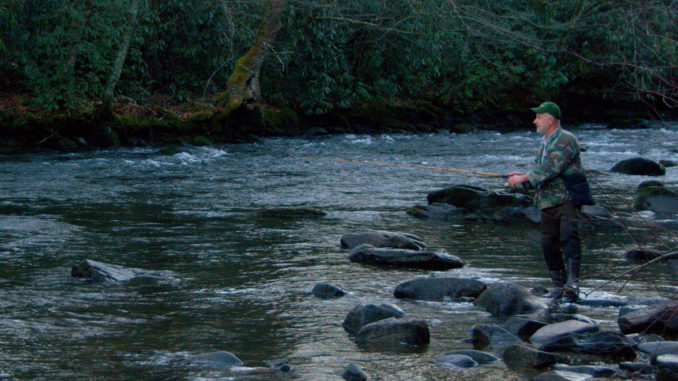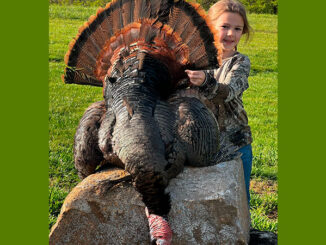
Despite some season closures, anglers can still fish
Prime spring fishing is just around the corner, as mountain streams begin warming up, and brown trout, rainbow trout and brook trout become active and hungry, eager to gobble up the abundant spring hatches. It’s a time when anglers enjoy some of the best trout fishing of the year.
But that’s at least a month away, and the end of February doesn’t always signal the end of winter in the mountains. Mother Nature just doesn’t always cooperate with the calendar, and snow, ice and freezing temperatures have become common, if unwelcome, companions of early spring, sometimes continuing into May.
After a record-dry summer, mountain streams, with few exceptions, are returning to normal flows, thanks to winter’s much-needed and welcome rain.
In North Carolina, hatchery-supported waters are closed to fishing at the end of February, reopening at 7 a.m. on Saturday, April 1. Cherokee Enterprise Waters also will be closed in March, reopening the last Saturday in March, a week earlier than the opening of the state hatchery-supported fishing season.
The month off gives hatchery personnel time to restock streams, and, more importantly, gives trout time to become acclimated to open waters after a lifetime in the crowded raceways of a hatchery.
Opening day on hatchery-supported streams and Enterprise Waters is a much-anticipated event. The trout are hungry, well spread out and usually fairly easy to catch — put-and-take fishing at its best.
In the meantime, trout fishers don’t have to stay home tying flies, sharpening hooks and cleaning their gear. Numerous trout streams are open year-round in North Carolina and South Carolina. A few North Carolina streams are even open to bait fishing. Bait fishing is permitted year-round on streams designated as wild trout/natural bait waters. Fishing, however, is restricted to a single hook, a minimum-size limit of seven inches, and a daily creel limit of four trout — the same restrictions that apply to wild trout streams. Nineteen streams in seven counties have this special designation.
Delayed-harvest streams in the Carolinas also are open to fishing in March. North Carolina’s delayed harvest season is Oct. 1 through June 2. In South Carolina, the delayed-harvest season is Nov. 1 through May 14.
One big plus of March fishing is the rainbow trout spawn, which usually occurs between the last of February and first of April, depending on the weather. Best strategy for catching postspawn rainbows is to use a long leader (at least 12 feet), cast to riffles above a pool and allow the fly to float into the pool, letting it drift until it begins pulling in the current. Rainbows often will strike near or at the end of a drift. If fishing with a Caddis pattern, fish it downstream and strip it back through the current for best results.
Although spawning females rarely respond to flies or other baits, the best advice is to fish for rainbows when they finish spawning. If a spawning female is caught, the fish should be handled carefully and released as quickly as possible.
Since topwater activity is often limited, nymph patterns are recommended for fishing in late winter and early spring. Gold-ribbed Hare’s Ear, Pheasant Tail, Prince, Zug Bug, Woolly Worm or a Woolly Bugger usually get the best results. Recommended sizes are Nos. 14 to 16. For the Woolly Booger, use a No. 8 or No. 10. A bead-head or other extra weight will help get the fly down to the bottom where nymphs usually are found.
Fly fishing, of course, is not the only method of catching trout. While a few streams are limited to fly fishing, the majority may be fished with flies or artificial lures.
Regulations for wild trout waters in the national forests and the Great Smokey Mountain National Park stipulate that artificial lures, such as spinners, must have a single hook. A legal spinner can be made from a treble-hook spinner by clipping off the extra hooks. However, the spinners do not spin as well as those that are manufactured with single hooks.
Although rules are strict for wild-trout waters, just about anything goes in hatchery-supported streams. Night crawlers, earthworms, meal worms, wax worms, crickets and other live baits are legal. Lures can be either single or treble hook. With rare exceptions, hatchery-supported waters do not have size limits.
Night crawlers and earthworms have been traditional baits in the mountains for decades, but some artificial baits, especially Berkley Power baits, catch as many fish as live bait. Dyed salmon eggs also do well, especially when targeting big browns.
In normal water conditions, chartreuse and yellow Power Baits get excellent results. If the water is dingy, use fluorescent orange, red, or pink.
Keep a variety of spinners such as Rooster Tails, Panther Martins, Mepps, Blue Fox and Joe Flies in a variety of sizes and colors. If one pattern doesn’t work, keep switching until you find one that does work.





Be the first to comment